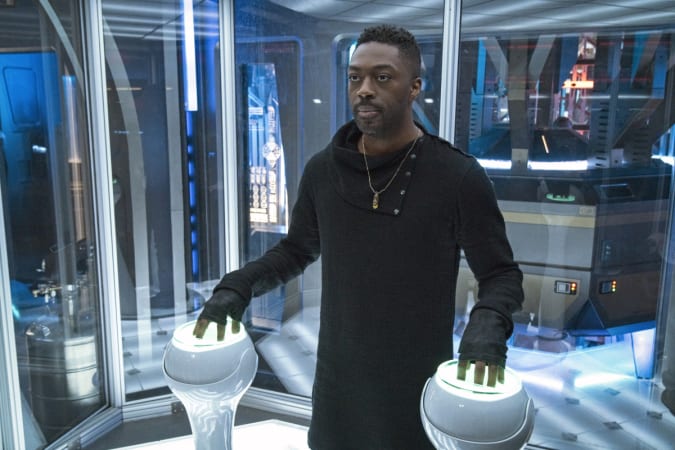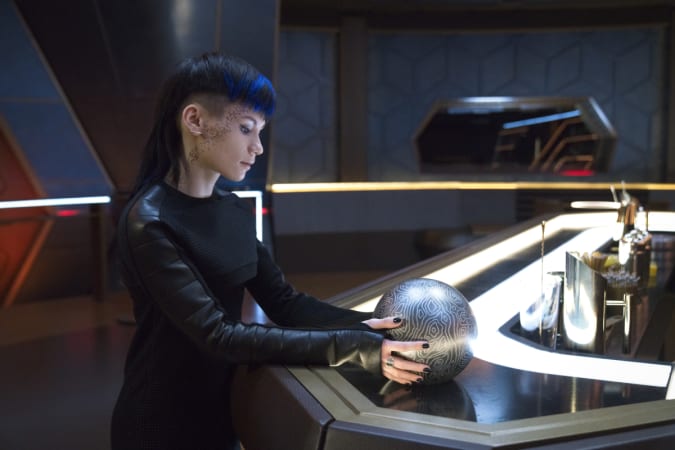The following contains minor spoilers for season four, episode six of ‘Star Trek: Discovery“(And vague discussion of episode seven).
There’s a little trend or tradition among Star Trek shows starting with The Next Generation. At some point around season three or four, the show finds its way and actually turns out to be good, if not great. This is of course not a phenomenon restricted to Trek, but only Trek has a specific name for it: grow the beard. This refers to Commanders William Riker and Benjamin Sisko, who both started their respective shows clean-shaven but grew beards by the time The Next Generation and Deep Space Nine got noticeably better. And Discovery might finally be ready to make its own metamorphosis, but instead of a beard, it’s a format change that gets fans talking.
One of the complaints about the first three seasons of Discovery – besides the somber tone of voice, the infallibility of Michael Burnham, and all that crying – was that they largely encompassed a more serial format in which each episode was another episode in a long ongoing plot. Sure, there were one-off adventures on occasion, but each episode was still tightly focused on the bigger story.
CBS
Season four started similarly, with the season premiere and second episode dedicated to building the new status quo of rebuilding the United Federation of Planets and introducing this season’s great threat: the Dark Matter Anomaly (DMA). In contrast to previous seasons, in which each episode would have focused on one step towards finding a solution, however, problem-solving has moved into the background and has a largely independent A-plot.
The shift was first seen in episode three, where Burnham and her crew are tasked with tracking down a rogue member of the Qowat Milat (as I described it to my Editor: Ninja Nuns). The DMA is more of a C-plot in this episode, with the B-plot position being occupied by the story of Gray Tal and his new Android body. In episode four, Tilly attempted to train and keep a group of Starfleet cadets alive (in a plot reminiscent of Voyager episodes).Learning curve‘ and ‘Good shepherd‘). In episode five, the crew was tasked with evacuating a planet threatened by the DMA. The anomaly may have been the driving force in the episode, but it was actually interchangeable with pretty much every other planetary threat, as the episode focused more on Michael’s struggle to free six prisoners on the surface.
CBS
In this week’s episode, Discovery travels into a subspace rift created by the DMA and runs aground, with the ship’s newly sentient AI unable to get the crew to safety. While the anomaly is again causing Discovery’s problems, it is again a replaceable threat. The episode’s real drive is problem solving to get the crew out and the personal battles of characters like Zora and Cleveland Booker.
Next week, the dark matter anomaly will come to the fore again, but that’s only logical, as episode 7 marks the approximate midpoint of the 13-part season as well as the end of our calendar year. It is not uncommon for many television shows to use this time to review their main storylines and take those storylines to the next phase. But it’s unusual for Discovery that it doesn’t present as clear a divide as in previous seasons: Season 1 went from the Klingon War to the Mirror Universe, Season 2 went from the Secret of the Red Angel to battling the evil AI controls. Next week’s episode represents a smoother transition than before.
CBS
That smoothness is largely due to the fact that the ongoing storyline hasn’t been given as much time to flourish openly as it has gushed in the background, while the show instead focuses on character-building single-shot adventures. Standalone episodes can feel out of date at a time of streaming and binging where viewers can get their answers instantly, so not every single chapter has to appear “complete”. There’s no chance of being dissatisfied with the contents of an episode when the next is seconds away. Even shows that premiere week after week have fallen into the trap, provided that most viewers will enjoy the show later on anyway, and only the stubborn will see each rate as it falls.
But for most of its existence, Star Trek has been a franchise for the die-hard. The people who can’t wait for the next episode, the people who read and write summaries on their favorite pop culture pages, and those who share theories on social media. Parent + has put a lot of its chips on the strength of this die-hard base and stacked its production schedule with five different Star Trek shows that seldom overlap, meaning a fan who wants to see it all ASAP must keep their Paramount + subscription all year round.
CBS
While fan complaints may have played a big role in Discovery’s decision to move to a more episodic format, a desire to keep fans hooked for the entire run of the show likely played an even bigger role. When Discovery was the only Star Trek show and one of Paramount + ‘few offer periods, it was common for viewers to sign up for a subscription only when they wanted to do something – sometimes even within the free week the service is offering to new customers . Shows like Lower Decks, Prodigy, and the upcoming Strange New Worlds are already running in a more episodic format, meaning that Discovery may have created a “hole” in an ongoing subscription for viewers, a chance for them, a break from Star Trek and paying to put in 6 dollars a month.
With an episodic show, it’s much harder to ignore while it’s on; Each episode provides a complete viewing experience, making the wait between episodes less of a nuisance. And when Discovery hits new worlds and new adventures every week, there’s something new to tell fans instead of rehashing the same old theories about the ongoing storyline over and over again until the end of the season. Star Trek was designed for episodic viewing only, and adopting the format will make it easier for Discovery to keep fans interested over time.
All products recommended by Engadget are selected by our editorial team independently of our parent company. Some of our stories contain affiliate links. If you buy something through one of these links, we may earn an affiliate commission.



